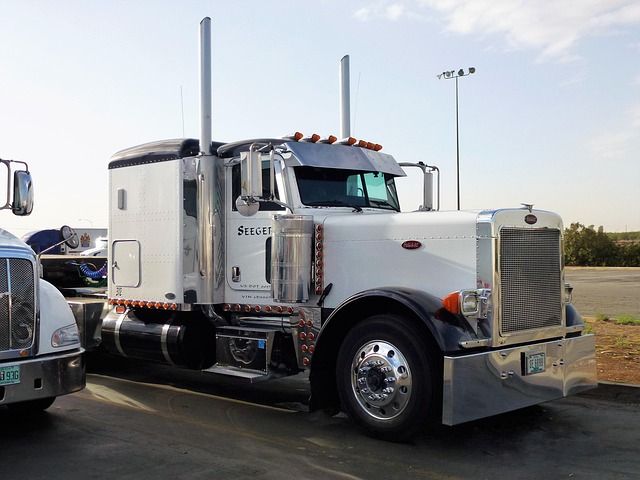Looking to register your car in California? This comprehensive guide walks you through every step, from understanding vital registration requirements to submitting applications. We delve into gathering essential documents and the crucial process of performing a VIN verification. Learn how to navigate the California DMV system efficiently and receive your official vehicle registration papers. By following these clear instructions, you’ll be on your way to becoming a compliant California driver.
- Understand California Vehicle Registration Requirements
- Gather Necessary Documents for Car Registration
- Perform VIN Verification: Steps and Importance
- Submit Application and Required Fees to DMV
- Receive Your California Vehicle Registration Papers
Understand California Vehicle Registration Requirements

Before registering your car in California, it’s crucial to understand the state’s vehicle registration requirements. These include providing proof of ownership, insurance, and identifying information. One key aspect is ensuring that the Vehicle Identification Number (VIN) is verified accurately. This process, often done through a mobile VIN verification or vin inspection, checks the vehicle’s history and ensures it complies with California’s regulations.
California requires a comprehensive review during registration, which includes checking for any outstanding warrants, accidents, or title issues. The state employs advanced systems to cross-reference the provided VIN with its database, making it easier to identify potential problems that might affect your car’s registration. A valid and accurate vin inspection is therefore an integral part of ensuring a smooth registration process.
Gather Necessary Documents for Car Registration

Before you start the registration process, ensure you have all the essential documents. The California Department of Motor Vehicles (DMV) requires several key pieces of information for car registration. One crucial document is the Vehicle Identification Number (VIN) verification. This unique 17-character code is a critical identifier for your vehicle and can be easily checked through a mobile vin inspection or verification service.
Additionally, you’ll need proof of ownership, typically a bill of sale or a previous registration certificate, and current registration from another state if you’re transferring the title. An up-to-date insurance card and a valid driver’s license are also mandatory. Gathering these documents beforehand streamlines the registration process at your local DMV office.
Perform VIN Verification: Steps and Importance

Performing a Vehicle Identification Number (VIN) verification is a crucial step in the car registration process in California. This involves checking the vehicle’s history and ensuring its authenticity, which is essential for safety and legal compliance. You can do this by using a mobile vin verifier or conducting a vin inspection yourself.
First, gather the necessary documents like your car’s title, registration, and proof of insurance. Then, locate the VIN on the vehicle—it’s usually found on the driver’s side door frame. Input this unique identifier into an online database or a mobile app to access detailed information about the car’s history, including ownership changes, accident records, and maintenance records. A mobile vin verification service can streamline this process by providing instant, accurate results, making it a convenient option for California residents looking to register their vehicles quickly and efficiently.
Submit Application and Required Fees to DMV

To begin the registration process, you’ll need to submit an Application for Title and Registration (Form DV-140) along with all required fees to the California Department of Motor Vehicles (DMV). This can be done at a local DMV office or online. Ensure that your vehicle’s VIN (Vehicle Identification Number) is accurately entered on the form, as it undergoes a vin verification process to ensure its authenticity.
A key step in this process involves paying the registration fee and any applicable taxes. You may also need to present valid identification documents, proof of insurance, and, if applicable, a completed odometer reading statement. Once your application is approved, the DMV will issue you a registration certificate and a license plate for your vehicle, completing your car’s registration in California. Consider using a mobile vin verifier for added convenience during this process.
Receive Your California Vehicle Registration Papers

After submitting your application, you’ll receive your California Vehicle Registration Papers. These documents are crucial and should be kept in a safe place. They include vital information such as your vehicle’s unique VIN (Vehicle Identification Number), which is used for vin verification. This process ensures that your car is accurately registered and tracked within the state’s records.
One convenient service available in California is the mobile vin inspection or mobile vin verification offered by authorized providers. These services allow you to have your vehicle’s VIN verified on-site, saving time and effort. A simple check through a mobile vin verifier can confirm the accuracy of your registration details, giving you peace of mind that everything is in order with your car’s legal status.
Registering a car in California involves understanding state requirements, gathering essential documents, and successfully completing the VIN verification process. By adhering to these steps—from preparing necessary paperwork to submitting applications with the DMV—you’ll be well on your way to securing your vehicle’s official California registration papers. Remember, accurate vin verification is a crucial step that ensures compliance with state laws, so don’t skip it!
